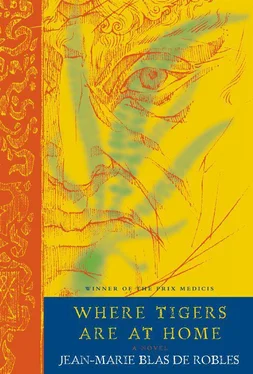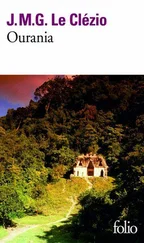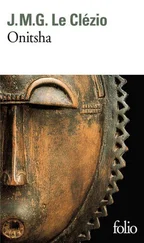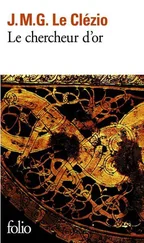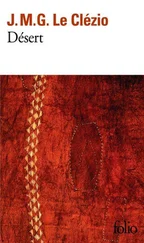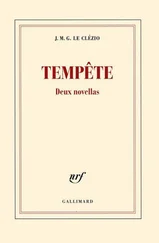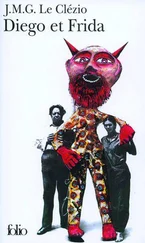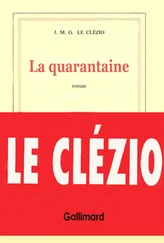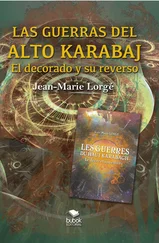I agreed jubilantly, enticed by this condition, like something out of a romance.
We left the College & set off to walk into the town. It was clammy, the heat oppressive & in the sky there were some of those little coppery clouds announcing a storm. We chatted as we walked, Kircher untiringly commenting on all the monuments of Ancient Rome we passed on our way. Just as we turned into the street of St. John Lateran, leaving the Coliseum behind us, Kircher stopped.
“This is where you have to accept the little formality necessary for my experiment. I’m going to ask you to accompany me for several minutes without seeing anything. Not as a precaution, for there’s nothing you mustn’t see, but to ensure the maximum effectiveness of my experiment. So close your eyes & don’t open them again until I tell you to.”
I happily obeyed & my master led me by the shoulder, as if I were blind. After about fifty paces we entered a shady alley — I realized that from the welcome absence of the sun on the back of my neck—& quickly turned off two or three times. Then we started to go down some never-ending steps. What was odd was that there was now no noise to be heard. This complete silence was certainly frightening & I started to tremble with apprehension as much as with cold. From time to time we took several paces on the level, twisting and turning, as if we were in a labyrinth. Finally, after about thirty paces along a path so narrow we had difficulty walking side by side, Kircher stopped.
“Here we are,” he said gravely. “We have only gone some twenty paces down into the depths of the ground, but in so doing we have passed through the ages! Just use your imagination: not far from here the gladiators of Publius Gracchus are training to die; Tertullian is still drowning his sorrows in the outskirts of Carthage, Marcus Aurelius is slowly dying on the distant banks of the Danube & Rome is already nothing more than the indolent capital of a rickety, moribund empire. It is the year of Our Lord 180, in the villa of an idolator rich enough to have set up in his own house a shrine to the god of his heart. Open your eyes, Caspar, & contemplate the God Mithras, prince of the shades & of light.
I obeyed my master & could not prevent myself from shrinking back at the spectacle awaiting me. We were in a sort of little cave hewn out of the very rock; two oil lamps cast a weak light on a stele roughed out into panels but with a very delicately sculpted bas-relief on one of its faces. It showed the god Mithras as an ephebe in a Phrygian cap cutting the throat of an enormous bull. The surface of the stone and the walls of the grotto were soiled with splashes of dried blood. I crossed myself as I spoke the name of Jesus.
“Don’t be afraid,” Kircher said calmly, “the only danger we are exposed to here would be to catch a cold. Help me light these torches, we’ll be able to see better & it will warm up the unhealthy air in this place a little.”
As we lit the torches, I saw that the shrine was the largest of the six or seven rooms in an underground dwelling. These other rooms were paved in rudimentary opus sectile & one could still make out patches of crude decoration on the walls. In a recess, which must have been the kitchen, clear water was still running into a granite trough. We went back to sit opposite the altar of Mithras, on one of the stone benches running along the sides of the temple.
“The worshippers of this god,” my master went on, “used to sit here, just as we are sitting, after having placed the consecrated offerings on a table. Then they would start praying, while the priest, doubtless the master of the house, would chant the ritual hymns. That was the point at which assistants would cut the throat of a bull in a room above this one; the blood poured in through the openings you can see in the vault in a warm, sickly rain toward which the proselytes turned their hands & faces in humility …”
“Are they …” I stammered, pointing at the brownish-red stains on the stone.
“No, no,” said Kircher, amused, “those are the remains of paint. Everything was decorated, walls & bas-reliefs, & it’s the murex dye that resists the ravages of time best.”
I was glad of the correction but still could not repress a certain feeling of disgust at the sight of the ambiguous stains.
“Once this ritual & purifying shower were finished, men & women in their bloodstained robes, hair sticky with clots, started to eat & drink in honor of the god. Then an unbridled orgy brought this ‘liturgy,’ worthy of the most barbaric of mankind, to a fittingly appalling end.”
The scene evoked by Athanasius having revived my remorse at certain doings of which the reader will be aware, you will understand how distressed I was at this account. Fortunately he was already explaining to me the symbolism of the stele before us:
“It represents the scene of the taurobolium, the ritual sacrifice of the bull. It shows light & darkness, that is, Ormuzd & Ahriman in their endless struggle against each other. These two enemy brothers from the Persian cosmology would destroy each other were it not for the harmonizing action of Mithras. Uniting hot & cold, wet & dry, good & evil, generation & decay, dawn & dusk, he brings about essential harmony, just as a heptachord tempers the low sounds with the high ones, the high sounds with the middle ones, the middle sounds with the lower ones & the latter with the higher ones again. A doctrine that illustrates perfectly Zoroaster’s egg, such as I have managed to piece it together from the works of Iamblicus & Plutarch of Chaeronea.”
Taking a pointed stone, on a patch of plaster Kircher drew an ellipse filled with long, black & white intersecting triangles, with the Sun in the middle & the southern and northern constellations all around.
“But Zoroaster,” I asked, “what exactly was he?”
“Zoroaster was not a man but a title, the one given anyone who concerned himself with knowledge of the arcana & magic. The famous Zoroaster, the inventor of magic, is no other than Ham, the son of Noah. The second Zoroaster is Cush, the son of Ham & faithful interpreter of his father’s knowledge. Cush, in his turn, is the father of Nimrod, who built the Tower of Babel. It is probable, as I could easily prove, that Ham learned from Enoch not only the doctrine of the angels & the mysteries of nature but also the black arts concerning the strange & esoteric arguments of the descendants of Cain. Mixing the lawful & unlawful arts, he established a rule that was degenerate in all respects compared to that of his father. In a second age, Trismegistus, a descendant of the Canaanite branch of Ham—& the son of that Mizraim who had chosen Egypt as his country — separated that which was lawful from that which was not & created a rule that conformed more closely to divine religion. And he proceeded like a pagan philosopher, supported solely by the light of nature amid the depravation of the world. And he, in truth, is the only Zoroaster, the Hermes Trismegistus praised by so many writers of Antiquity. But it’s time we moved on to the second premise of my stone syllogism; there are more surprises in store for you.”
Without giving me time to respond, Kircher grasped a torch & led me along the narrow corridors of this subterranean dwelling. Lit by the reddish light of the flame, he looked like a Virgil guiding his Dante Alighieri to hell, si parva licet componere magnis . 1Soon we saw some steps carved in the rock. After having climbed them carefully, we came into a vast subterranean hall supported by a multitude of heterogeneous columns.
“Cross yourself,” said Athanasius, as he did so himself, “for we are in a basilica. This church dates from the fourth century after the death of Our Lord; it was constructed by the first Christians out of the scattered materials of the devastated city. Never have faith & love reached such a high point as in this place. It was the beginning of a new era, built on the ruins & doubts of a collapsed civilization. Here there is no display of wealth, no frivolous ornament, but simplicity alone, as befits the nakedness of man before the grandeur of God.
Читать дальше
